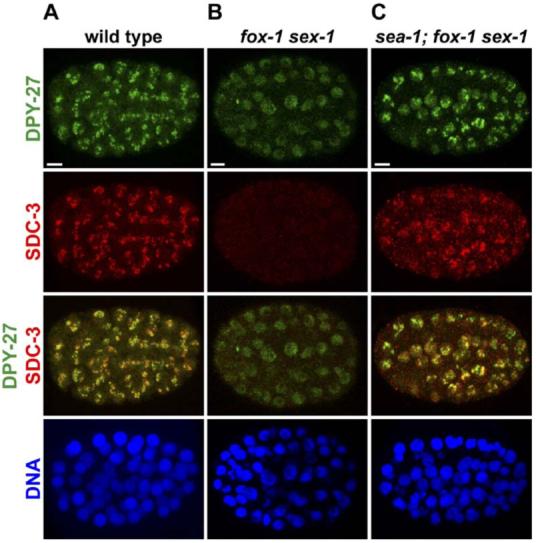Figure 2.

A sea-1 Mutation Permits the Dosage Compensation Complex to Assemble onto the X Chromosomes of fox-1 sex-1 XX Mutant Embryos
Confocal images of mutant or wild-type XX embryos at approximately the 100-cell stage, costained with antibodies against the dosage compensation proteins DPY-27 (green) and SDC-3 (red) and with DAPI (blue), a DNA-intercalating dye.
(A) In wild-type XX embryos, DPY-27 and SDC-3 localize specifically to X chromosomes.
(B) In fox-1 sex-1 mutant embryos, the dosage compensation complex cannot assemble on X, causing XX animals to die from overexpression of X-linked genes. In these mutants, SDC-3 is absent and DPY-27 is greatly reduced in abundance. Residual DPY-27 is diffusely distributed within nuclei.
(C) sea-1(y356) suppresses fox-1 sex-1 lethality by restoring the levels of dosage compensation proteins and permitting assembly of the complex onto hermaphrodite X chromosomes. Scale bars equal 5 μm.
